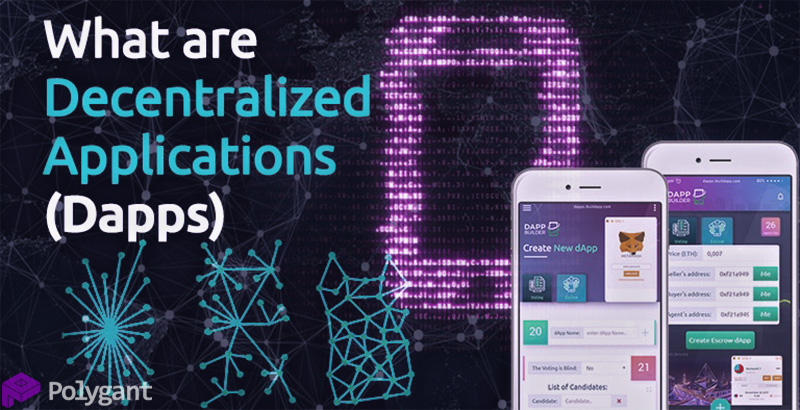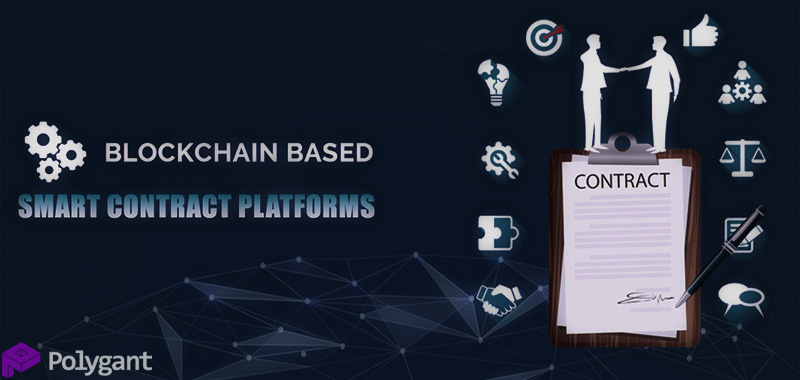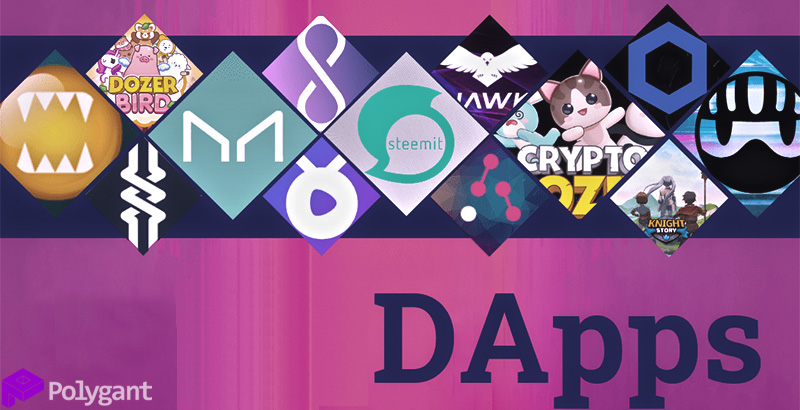Blockchain has forever changed the world of finance by offering P2P payment systems, although this technology provides more possibilities than just cryptocurrencies. Decentralized applications (dApps) are an equally important blockchain product. Unlike cryptocurrencies, they offer solutions for many tasks: from gambling and ordering pizza to investing, project management, and big data processing. In this article, we will tell you why decentralized apps are needed and how they work.
Table of Contents
What dApps are

A blockchain stores records of all monetary transactions conducted through a P2P payment system. Cryptocurrency wallets, i.e. software clients, perform operations with data from these records such as generating addresses (keys), updating balances, and more. In fact, cryptocurrencies can nominally be ranked as dApps, because they operate on blockchains using a distributed ledger as a means of storing and transmitting information.
If you add a special environment for executing program code to such a system, then you have a decentralized computer. It will be just as secure and reliable as cryptocurrencies. Many blockchain platforms have such capabilities and create a virtual machine. For example, for Ethereum it is EVM. The programming code that runs a virtual machine is called a smart contract.
What smart contracts are for
Using a smart contract, you can, for example, issue a utility token. In Ethereum alone, according to the ERC-20 standard, developers have created 267,000 token contracts.
However, a dApp is more than just another new token. It runs on a blockchain and smart contracts — a programming code that sets the conditions for the execution of various operations. Unlike a smart contract, a dApp is a ready-made software product or service with a user interface and useful features.
There are already several thousand decentralized apps: online games (including gambling), P2P exchanges, investment projects with different risk levels, etc. There is even a separate B2B segment. An example of such an application is ChainLink, which allows you to process and analyse a lot of data from various sources using specialised smart contracts.
Blockchain platforms that support smart contracts
In order to develop decentralized apps, you need an idea, experienced programmers, and a blockchain platform that supports smart contracts. Here are the most popular platforms:
- Ethereum. The first blockchain platform that contributed to the development of smart contracts and created the Solidity programming language for writing them. Despite the fact that competitors already offer increased productivity, speed, and even more convenient development environments, Ethereum remains the leader of created tokens and working dApps.
- EOS. A platform that represents itself as a decentralized OS. Its virtual machine is compatible with Ethereum (it supports Solidity) but offers better performance in combination with an enhanced level of security. Another benefit of EOS is zero transaction fees.
- TRON. A platform for dApps and smart contracts that was initially created as a decentralized social network for the entertainment sector. Due to the simplicity of creating applications in TVM and issuing tokens, it quickly gained popularity.
- NEO, or ‘Chinese Ethereum.’ Another popular platform that supports smart contracts. Unlike the previous two, it was created as a way of digitalising real assets through a protocol for their identification. Additionally, NeoVM supports 5 common programming languages.
This is only the four leaders that control 91% of the market. The range of platforms for launching decentralized apps is much larger. Steem, Klaytn, ICON, and hundreds of other blockchain platforms offer their solutions that give developers the tools to implement their ideas in dApps.
Examples of decentralized apps
The first dApp that managed to gain a huge audience was The DAO (Decentralized Autonomous Organization) project. Its goal was to create a decentralized community in which participants would make collective decisions on financing various crypto projects in the Ethereum ecosystem. The idea appealed to 18,000 enthusiasts who joined the project. Unfortunately, hackers plundered it, so the organization went ‘bankrupt.’
The DAO pursued only an investment goal, but if we turn to popular apps that are widely used, Steemit should be recognized as a prime example. At first, it was a social network on a blockchain in which authors of high-quality content received a reward in the form of Steem coins. Over time, Steemit evolved into the Steem ecosystem, which consists of various services, including launching new decentralized apps.
Trendy dApps
The market for decentralized apps is actively developing and new interesting projects are emerging. It is difficult to identify one undoubted leader of the year among them because different apps are rated number one in different ratings. The following 3 dApps show up more often than others:
- Karma. A social network whose main idea is to exchange positive original content. It runs on the EOS blockchain.
- OpenSea. A marketplace where digital collectibles from blockchain games are traded. It is powered by Wyvern Protocol.
- IPSE. A peer-to-peer search engine enabling private searches on a file-sharing network. It runs on the EOS blockchain and IPFS protocol.
These, as well as thousands of other dApps truly unleash the potential of blockchain technology for the real world. We recommend that you take a closer look at them, since the hopes for developing a new generation of digital solutions and Web 3.0 rest on decentralized apps.


